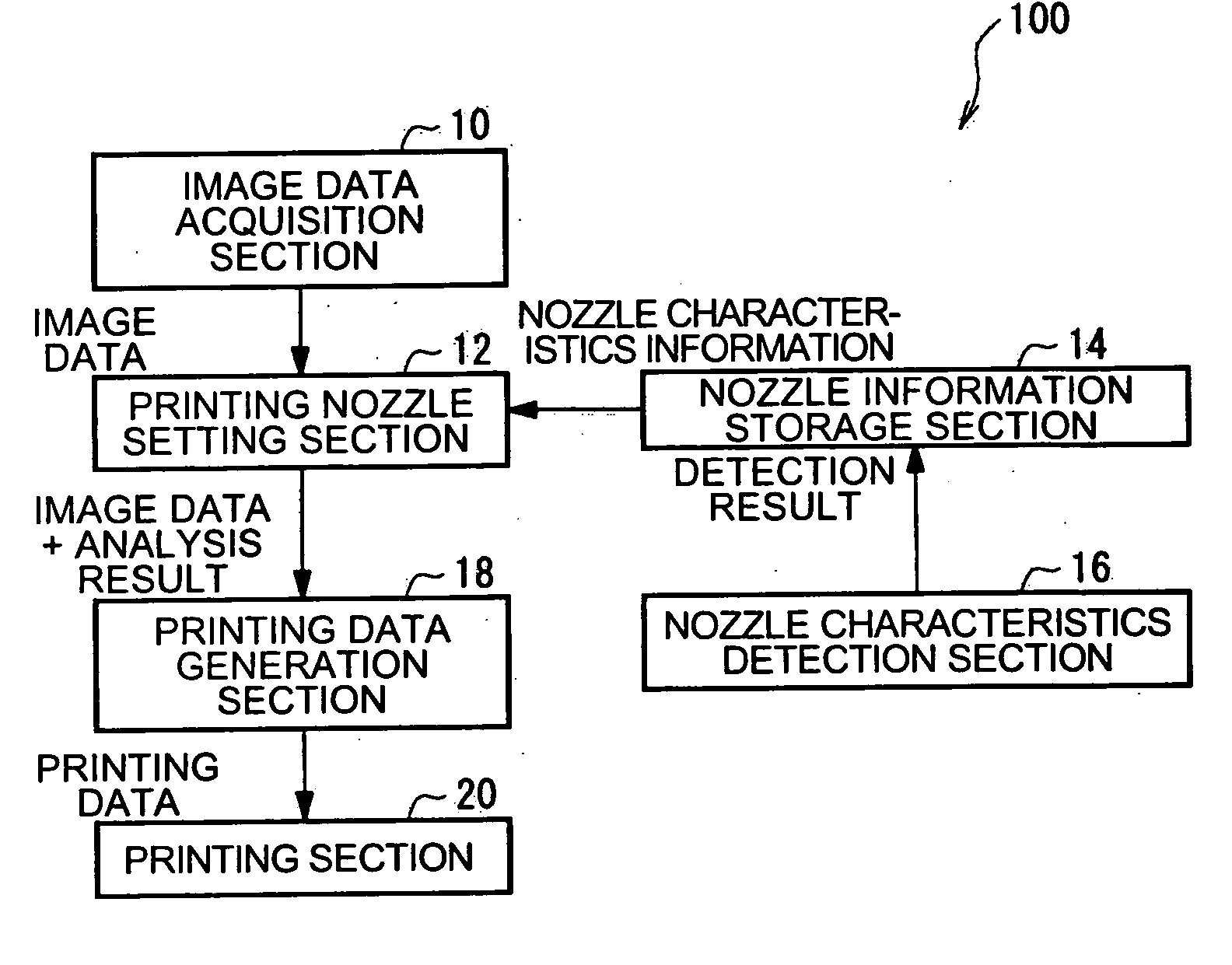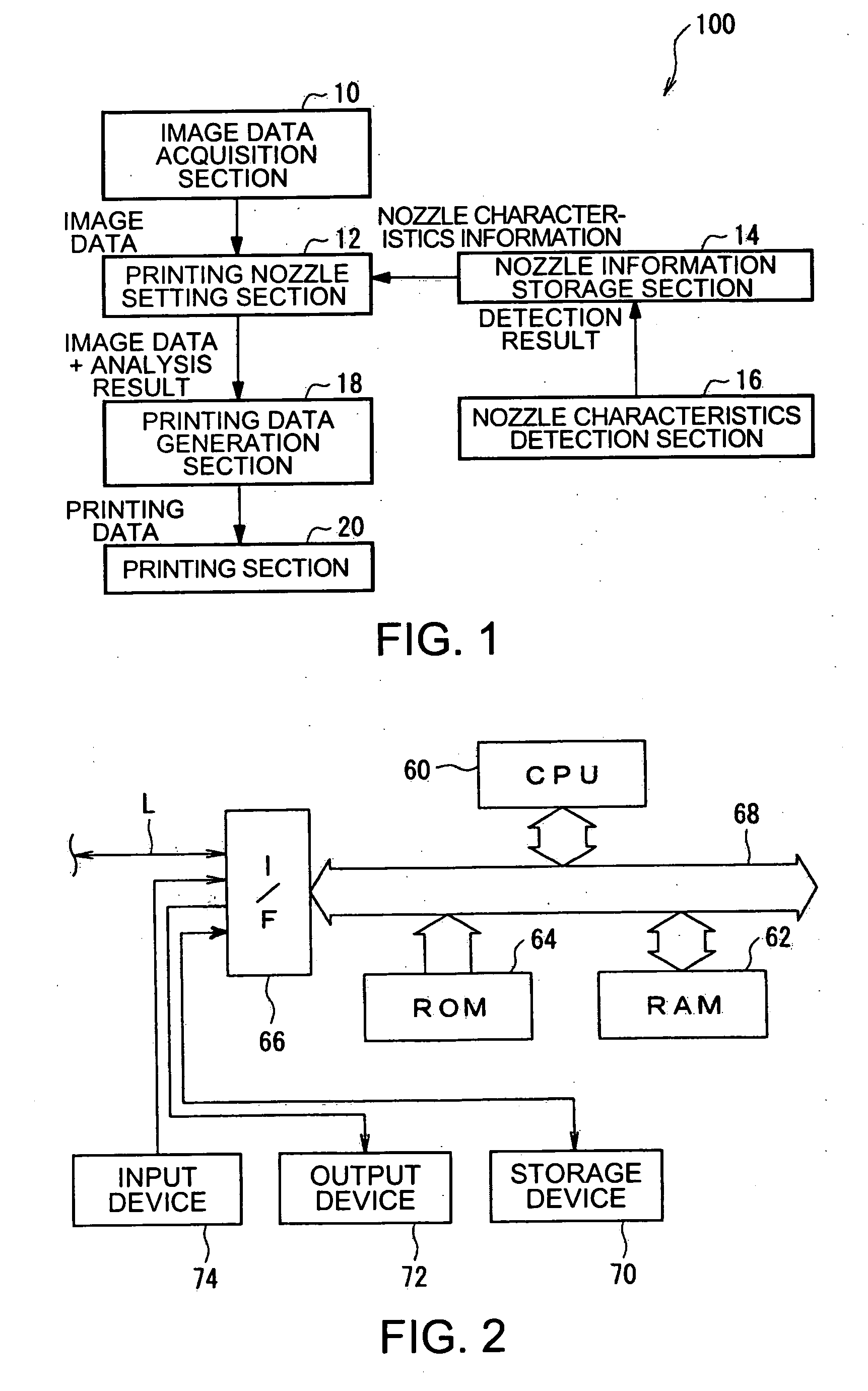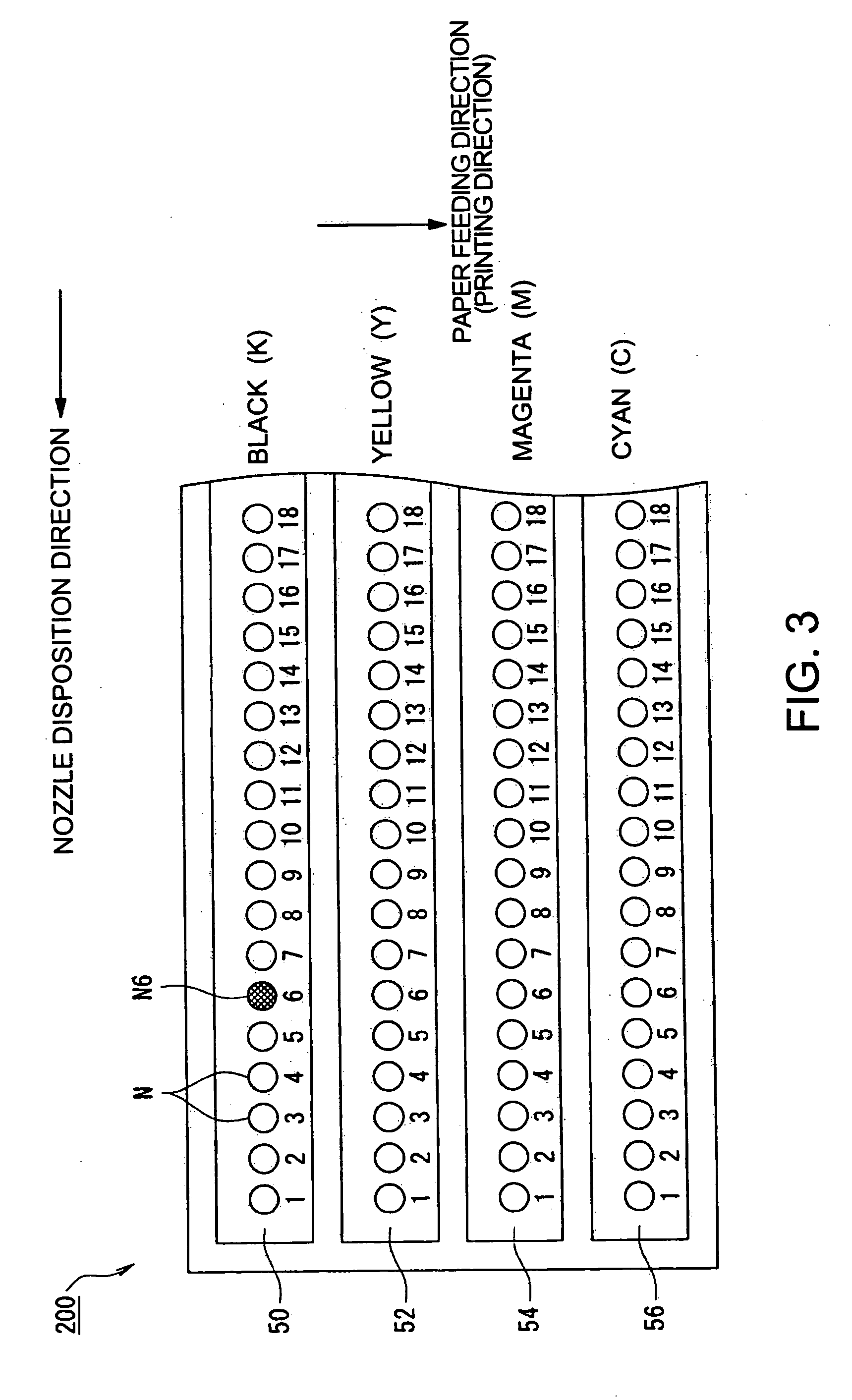Printing device, printing device control, program and method, and printing data generation device, program and method
a printing device and control program technology, applied in printing, typewriters, other printing apparatuses, etc., can solve the problems of long printing time drawback, type of printing device, manufacturing deviation observed in the printing head, etc., to stop image degradation and make image degradation less conspicuous
- Summary
- Abstract
- Description
- Claims
- Application Information
AI Technical Summary
Benefits of technology
Problems solved by technology
Method used
Image
Examples
second embodiment
[0321] Described next is a second embodiment of the invention by referring to the accompanying drawings. FIGS. 13 and 14 are both diagrams showing the second embodiment of the invention, i.e., a printing device, a printing device control program and method, and a printing data generation device, program, and method.
[0322] The second embodiment is different from the first embodiment in the respect that a nozzle disuse setting is made for every other line of the image data. In the following, only the differences from the first embodiment are described thereby avoiding redundant description.
[0323] In step S202, based on the analysis result of step S200 and the nozzle characteristics information read from the nozzle information storage section 14, the printing nozzle setting section 12 makes a setting of whether the pixel data of a predetermined region is used with the corresponding nozzle N. After such setting-making, the procedure goes to step S204. In the present embodiment, a nozz...
third embodiment
[0335] Described next is a third embodiment of the invention by referring to the accompanying drawings. FIGS. 15 to 17 are all diagrams showing the third embodiment of the invention, i.e., a printing device, a printing device control program and method, and a printing data generation device, program, and method.
[0336] The third embodiment is different from the first and second embodiments in the respect that a nozzle disuse setting is made by selecting not-to-be-used nozzles at random from a faulty nozzle and its neighboring nozzles for every line of the image data. In the following, only the differences from the first and second embodiments are described thereby avoiding redundant description.
[0337] In step S202, based on the analysis result of step S200 and the nozzle characteristics information read from the nozzle information storage section 14, the printing nozzle setting section 12 makes a setting of whether the pixel data of a predetermined region of the image data is used ...
PUM
 Login to View More
Login to View More Abstract
Description
Claims
Application Information
 Login to View More
Login to View More - R&D
- Intellectual Property
- Life Sciences
- Materials
- Tech Scout
- Unparalleled Data Quality
- Higher Quality Content
- 60% Fewer Hallucinations
Browse by: Latest US Patents, China's latest patents, Technical Efficacy Thesaurus, Application Domain, Technology Topic, Popular Technical Reports.
© 2025 PatSnap. All rights reserved.Legal|Privacy policy|Modern Slavery Act Transparency Statement|Sitemap|About US| Contact US: help@patsnap.com



